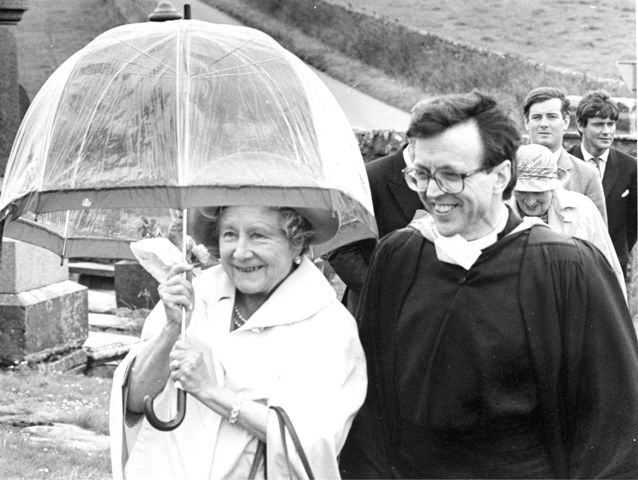 Related Articles
Related Articles
|
|
|
|
|
Revivals in the Highlands: Part 3
When the Holy Spirit is working in power extraordinary things happen. Alex Muir continues his study of revivals by focussing on the 19th-century Scottish Highlands.
This is Part 3 of a series. See Part 1 and Part 2.
 THE 19th century was a century of revivals in Scotland. There were three nationwide awakenings, beginning in the years 1839, 1859 and 1874. Every ten years or so, there were also local outpourings of the Holy Spirit. Other parts of Britain were also blessed. The results were seen in tens of thousands of conversions. Many lives, including some of the most depraved and ungodly, were transformed by the grace of God. More than that, Britain was given a Christian conscience of conversions which did much good in this nation and beyond. It has been calculated that seventy- five percent of all social reform, including the abolition of slavery and better working conditions in the mines and factories, came out of the Evangelical movement which had been energised and directed by nationwide revivals. THE 19th century was a century of revivals in Scotland. There were three nationwide awakenings, beginning in the years 1839, 1859 and 1874. Every ten years or so, there were also local outpourings of the Holy Spirit. Other parts of Britain were also blessed. The results were seen in tens of thousands of conversions. Many lives, including some of the most depraved and ungodly, were transformed by the grace of God. More than that, Britain was given a Christian conscience of conversions which did much good in this nation and beyond. It has been calculated that seventy- five percent of all social reform, including the abolition of slavery and better working conditions in the mines and factories, came out of the Evangelical movement which had been energised and directed by nationwide revivals.
The Apostle of the North
In the first part of the century, the most prominent preacher in the Highlands was Rev. John MacDonald. Because of his frequent evangelistic campaigns in the Highlands and Islands, and because he was a Gaelic speaker from the Rea country in Caithness, he became known as The Apostle of the North. But he was more than a successful evangelist. In place after place, God blessed his labours with revival. Sometimes the Holy Spirit was poured out so powerfully that unusual things happened. All of them, however, were within the parameters of Holy Scripture.
Young men saw visions and old men dreamed dreams. As the Word was preached, sinners were mightily convicted. At times, there were outcries but these were no different from what happened as a result of Peter's great Pentecostal sermon: 'When the people heard this, they were cut to the heart and said to Peter and the other apostles, Brethren, what shall we do?' (Acts 2:14-36). Another phenomenon came to be known as 'prostrations'. These were times when - under the preaching of the word - hearers were made so aware of the awesome presence of a holy God and of their own sinfulness that they would fall prostrate before Him, trembling, weeping and crying out for mercy.
This we also find in Scripture. At the dedication of the temple in 2 Chronicles 7, the glory of God so filled the place that the priests could not stand to minister. And when the Apostle John had a vision of the ascended Christ in the first chapter of the Revelation, he fell at His feet as dead. Later in that book we also read that the twentyfour elders - who represent the glorified Church in Heaven - fell down before the Lamb (Rev. 5:8). In true revival, time is invaded by eternity. No wonder people are sometimes overwhelmed in these ways. In this context, when the church folk of Inverness heard of such happenings in MacDonald's services, there was division of opinion. Some attributed them to Divine power, others to mesmerism.
The true mark of the Spirit at work
So this brings us to the key factor in all genuine revivals, a demonstration and awareness of the holy and awesome presence of Almighty God, together with a rapt attention to the preaching of His Word. At times, as I've shown, God has come among His people like a mighty wind carrying all before it. More commonly, however, God has chosen to work more quietly but just as powerfully. The American awakening of 1858 which, in one year, swept a million souls into the kingdom, is an outstanding example. Dr. J. Edwin Orr writes: Of course there was emotion, but this emotion was calm and deep. Of course there was excitement, but it seldom if ever, got out of hand.
John MacDonald's meetings could also be like this. At Ardeonaig in Perthshire in 1816, he preached to a congregation of between four and five thousand. The sense of God's presence was both quiet and awesome. His text was Isaiah 54:5: 'For thy Maker is thy Husband' and the sermon lasted for over two hours. 'Yet', writes Alexander MacRae, 'eagerness to attend to the Word preached was expressed on every countenance, while tears were flowing very copiously and literally watering the ground'. The Lord knows our human hearts. Before they can be made whole they must first be broken, every sin exposed, and all pride and self reliance laid low. Only then can we cast ourselves on the mercy of the Lord who alone can save us. So the prophet Hosea writes: 'Come let us return to the Lord. He has torn us to pieces but He will heal us... After two days He will revive us, on the third day He will restore us that we may live in His presence'( Hos. 6:1-2). In His presence, there is no place for pride and self display, and no place for anything that would in any way dishonour His name or contradict His Word.
Yielding to the Spirit
One factor common to all revivals is tears - genuine, heaven-given tears. In 'Gleanings of Highland Harvest', Rev. Murdo Campbell tells a moving and beautiful story about a communion in Dornoch in the year 1831. A great melting power from heaven came upon the congregation as they sat at the tables. A quarter of these held sixty communicants, all young believers, who had been brought to the Lord during a revival in Tain a year or two before. When the cloth from their table was taken away at the end of the service it was wet with their tears as though it had been taken out of the sea. To that story, there's a strange sequel which brings us back to Inverness.
Not long afterwards, there was a deadly outbreak of cholera in Portmahomack and almost all these young folk were taken to Heaven. God's ways are not our ways nor are His thoughts our thoughts. In 1832, the same plague broke out in Inverness and the citizens were filled with fear. During this time, a communion was held in the East Church and Dr. MacDonald came to assist. He gave a marvellous defence of the revival, preaching from Acts 2:33: 'Having received from the Father the promise of the Holy Ghost, He hath shed forth this which ye now see and hear'. Until near the end of the sermon, the preacher's voice was calm as he shared what he had seen of the awakening in Easter Ross. At last, the warm glow broke into a flame and he urged the people no longer to resist the Holy Ghost as their fathers did but to yield themselves fully to Him. MacRae continues: 'The effect of that one sermon was great and far reaching.
The capital of the Highlands was won. Souls were won for Christ and the East Church became the centre of a very special work. Arrangements were made to have a service there every Thursday and once a month, for a long period, Dr. MacDonald was the preacher'.
The most powerful awakening of the century was that of 1859 and the '60s. It touched the whole of Britain and brought over a million new members into the churches. Inverness was not left out...
To be continued ...
 Rev. Alex Muir is a retired Church of Scotland minister who has served in parishes in the Highlands and Islands. He has studied the history of revivals, and writes speaks on the subject. Alex now lives in Inverness with his family. Rev. Alex Muir is a retired Church of Scotland minister who has served in parishes in the Highlands and Islands. He has studied the history of revivals, and writes speaks on the subject. Alex now lives in Inverness with his family.
Whilst in the parish of Keiss and Canisbay in the north of mainland Scotland he ministered to the late Queen Elizabeth the Queen Mother who had a residence in the Castle of Mey.
|
Alex Muir/Sword Magazine, 09/03/2010
|
|
|
|